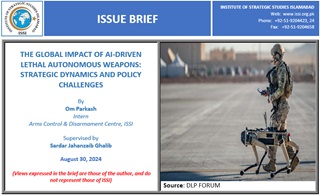The application of modern technologies impacts various sectors, including social, economic, informational, political, and military domains. Their influence on daily life is increasingly significant. While these technologies offer many advantages to humanity, it is essential to acknowledge their dual-use nature and rapid integration into the defense sector. Lethal Autonomous Weapon Systems (LAWS), also referred to as killer robots, represent a prominent application of Artificial Intelligence (AI) and are considered effective for achieving military objectives. This has drawn attention to advancements in weaponization, sparking a global technological race. However, according to the United States Department of Defense, these weapons are capable of independently identifying and targeting without further human intervention to execute a specific action or series of actions they utilize computer programming, as well as the integration of actuators and sensors with their environment. If they require human assistance, they are not classified as fully autonomous.[1] The utilization of a fully autonomous mode in LAWS has not been implemented at present. Nonetheless, several factors have contributed to their rapid proliferation in conflict environments, such as significant competition in the development and deployment of these unmanned weapons.
Home ISSI Publications Articles Young ISSI Professionals Corner Issue Brief on “The Global Impact of AI-Driven Lethal Autonomous Weapons: Strategic...















